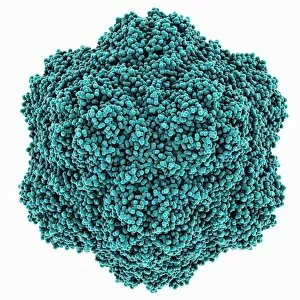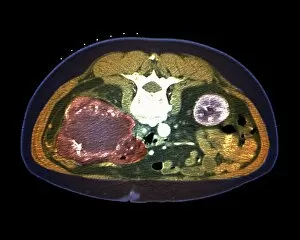Necrotic Collection
"Necrotic: A Haunting Journey through Silent Destruction" In the realm of medical mysteries
All Professionally Made to Order for Quick Shipping
"Necrotic: A Haunting Journey through Silent Destruction" In the realm of medical mysteries, necrosis stands as a chilling reminder of the silent havoc it wreaks on various organs. From splenic infarcts to kidney diseases, this dark force leaves no stone unturned. A glimpse into its eerie world reveals a haunting sight - a light micrograph capturing the aftermath of splenic infarct C015/6220. The once vibrant spleen now lies in ruins, consumed by necrotic forces. But the kidneys too fall victim to this malevolent entity. In another light micrograph, we witness kidney disease's relentless assault on these vital organs. It serves as a stark reminder that even within our bodies, life and death dance an eternal tango. The tobacco necrosis virus capsid emerges as yet another manifestation of this sinister power. Its presence signifies devastation for plants and crops alike, leaving behind fields tainted with decay and despair. Ischaemic bowel becomes another battleground where necrosis wages its war against health. A light micrograph captures this grim scene - an organ deprived of blood supply succumbs to irreversible damage caused by oxygen starvation. Even CT scans cannot escape the clutches of necrosis' reach. Kidney tumors reveal themselves in these images like ominous shadows lurking beneath the surface, reminding us that not all growth is benign or welcome. Osteonecrosis takes center stage next; an artwork portrays jaws afflicted by decay and deterioration due to compromised blood flow. An unsettling visual representation indeed – bones crumbling under invisible pressures from within. Splenic infarcts continue their macabre display in C015/6221 and C015/6219 - two more snapshots capturing organs ravaged by ischemia-induced destruction. These haunting images serve as cautionary tales about neglecting our body's warning signs. As if sensing our unease, heart attacks make their entrance onto this morbid stage with conceptual artwork.










